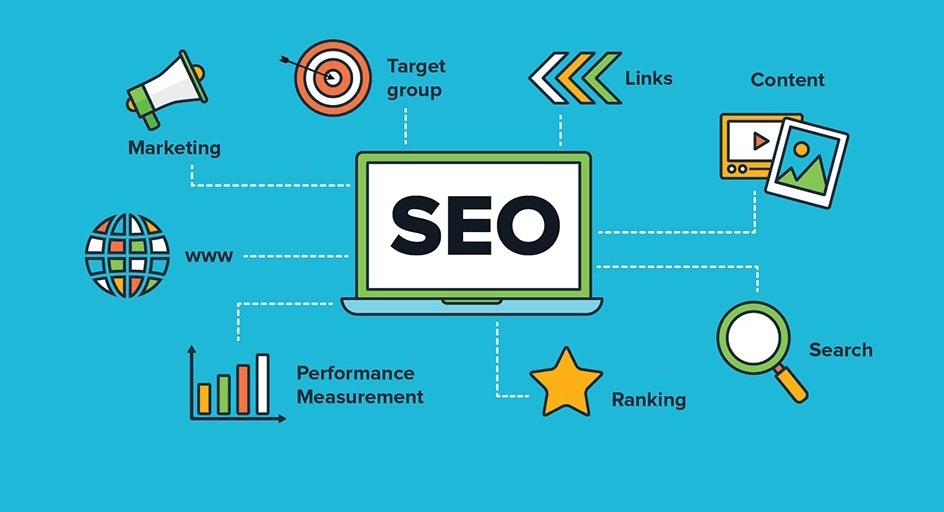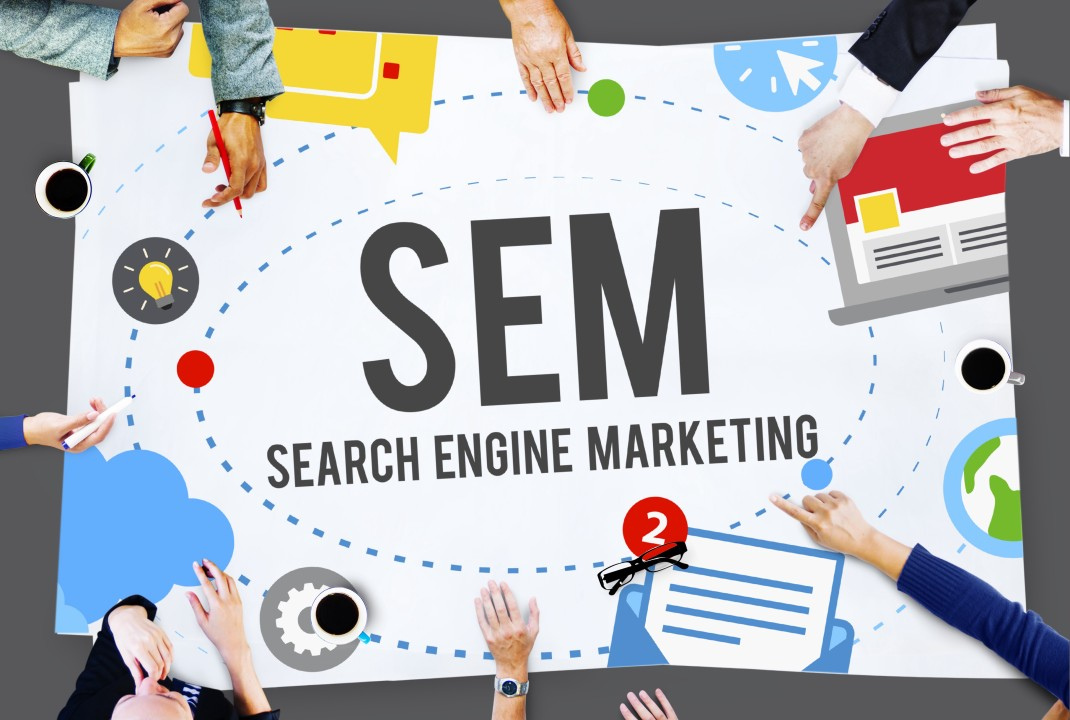SEO vs SEM: What’s the Difference?
Search engine optimization (SEO) and search engine marketing (SEM) share the same aim: to boost your website’s visibility on search engines. However, they go about achieving this goal in distinct ways.
SEO aims for long-term growth through organic methods, gradually building visibility over time at a low cost. On the other hand, SEM delivers immediate results by investing in paid advertising to accelerate visibility. Understanding the differences between SEO and SEM can help you choose the right strategy for your business.
ad

What Is SEO?
SEO is the practice of enhancing your website’s organic search traffic. Unlike paid methods, this process requires extensive time and adjustments to align your site with search engine algorithms.

ad
However, effective SEO goes beyond catering solely to search engines; it also involves creating user-friendly pages. Key aspects of SEO include conducting keyword research and implementing on-page, off-page, and technical optimization strategies.
Keyword Research
Before initiating any SEO campaign, it’s crucial to identify the keywords that users are searching for. These keywords are fundamental to shaping your on-page SEO strategies. Thankfully, numerous SEO tools are available to help you discover high-volume, low-competition keywords relevant to your niche. Prioritizing these keywords is essential as they attract a substantial search audience with relatively little competition.
However, integrating keywords into your content isn’t a simple task. Search engines prioritize valuable content over keyword density. Thus, part of your keyword research involves understanding user intent and adjusting your content to meet those needs.
On-Page SEO
Now that you have your keywords and content prepared, it’s time to optimize your page. This process involves several steps, such as creating high-quality title tags and meta descriptions, organizing the page effectively with headers to segment content, and providing image alt tags for all visuals used.
Ensuring that your URL slug accurately portrays the post’s topic is crucial. Additionally, incorporating a range of internal links is important as it aids Google in comprehending your site’s structure better.
Off-Page SEO
Off-page SEO involves actions taken outside of your website to improve its ranking. For example, one crucial factor Google evaluates to determine a page’s credibility is the number of backlinks it receives. The more high-quality sites linking to yours, the better your ranking on search engine results pages (SERPs).
Other off-page efforts include enhancing your social media presence to boost credibility, collaborating with influencers to increase awareness of your services, and creating guest blogs for websites in related niches.
Technical SEO
Consider technical SEO as the work done behind the scenes. It entails various backend adjustments to enhance site speed, eliminate duplicate content using canonical tags, and establish a secure HTTPS connection.
However, technical SEO encompasses more than just these tasks. It also involves submitting a sitemap to every major search engine, implementing schema markups on your pages to aid search engines in understanding content better, and optimizing robots.txt files, which assist search engines in determining which pages to include in search results for a query.
What Is SEM?
SEM involves enhancing your website’s traffic through paid search methods. It typically incurs higher costs compared to SEO since it involves prioritizing your appearance at the top of a search engine results page (SERP) by paying for placement.

Generally, you pay for each click your ad receives, with the cost per click fluctuating based on competition levels. Setting up an SEM campaign entails conducting keyword research, crafting ad copy, bidding for placement, selecting a target audience, and enhancing your Quality Score.
Keyword Research
Just as in SEO, the first step in SEM is pinpointing the keywords you wish to target. Competition and search volume are significant factors to consider since they influence the cost of each ad placement. For instance, a keyword with high demand such as “travel destinations” typically entails greater competition, leading to higher costs per click compared to a less popular term like “local hiking trails.”
To research your keywords and gauge the potential cost of placing ads, you can utilize tools such as Google Keyword Planner. This tool offers insights into keyword volume, competition levels, and the estimated bid ranges for your ad placements.
Ad Copy
Creating paid ad copy is distinct from writing blog content. It requires the ability to captivate readers within a concise space. For instance, platforms like Google restrict ad copy to three 30-character headlines and two 90-character descriptions, which are then tested in various combinations to find the most effective one.
While there’s no definitive formula for crafting successful paid ads, it’s beneficial to incorporate your keywords, maintain an engaging tone, and address your target audience directly.
Bidding and Targeting
You have the freedom to set your preferred cost per click. However, it’s essential to be practical. If you set your maximum bid at 25 cents while your competitors are willing to pay $1 per click, your ad may not receive visibility.
To ensure your ads reach the right audience, you can also utilize audience targeting to display your ad to specific demographics. However, it’s worth noting that with the upcoming removal of third-party cookies, you may need to find alternative methods for targeting your desired audience effectively.
Quality Score Assessment
When advertising on Google, your ads are assigned a Quality Score ranging from 1 to 10. Higher scores indicate greater relevance to users, resulting in potentially higher click-through rates (CTRs).
It’s important to monitor your Quality Score once your ad is approved by Google. This metric can provide valuable insights and suggestions for adjustments to enhance your ad’s resonance with audiences.
📚 Also Read:
- SEO PowerSuite Software For Windows To Increase Your Website Traffic
- Generative Engine Optimization (GEO): The Future of SEO
Benefits of SEO and SEM
SEO and SEM offer similar advantages as they both aim to drive traffic to your website. Here are some benefits you can expect from either SEO or SEM, or both:
- Increased visibility: Both SEO and SEM attract users to your website, boosting your online presence and potentially enhancing your conversion rates.
- Targeted traffic: Depending on your strategies, you can target specific consumer segments. SEO achieves this through customized landing pages, while SEM allows you to select your target audience during bidding.
- Enhanced brand recognition: Studies suggest that consumers need five to seven impressions to remember a brand. Consistent visibility in search results through SEO and SEM can improve brand recall, even if immediate purchases aren’t made.
- Data-driven insights: Both SEO and SEM provide valuable insights into consumer behavior. Analyzing campaign clicks allows you to understand audience preferences, helping you tailor your strategies effectively.
While SEO and SEM provide collective advantages, each method also boasts unique benefits. If you’re aiming for more specific objectives, you can explore the distinct advantages of each approach below.
Benefits of SEO
- Outperforming paid ads in CTR: The top-ranking result in Google’s organic search typically achieves an average click-through rate of 39.8%, surpassing the 2.1% CTR of the first position ad, which is comparable to the eighth spot in organic search.
- Long-term sustainability: Unlike paid advertising, SEO isn’t restricted by budget constraints. Even if marketing efforts are scaled back, the groundwork laid out continues to yield results over extended periods, potentially lasting for months or years.
- Enhancement of content quality: A fundamental aspect of SEO involves crafting valuable content that resonates with users. This not only boosts search rankings but also positions your website as a credible and trustworthy resource for consumers.
- Establishment of trust organically: As SEO doesn’t involve paying for consumer attention, brands may earn a higher level of trust from their audience, who perceive the brand’s credibility as genuine.
Benefits of SEM
- Immediate and rapid outcomes: If you require immediate results, SEM is the optimal choice. Your webpage will promptly appear to anyone searching for your designated keywords, whereas achieving visibility on the first page through SEO may take several months.
- Budget flexibility: While SEM does involve expenses, you have full control over your spending. For instance, with a modest paid ad budget of a few thousand dollars, you can target keywords with lower costs.
- Precise targeting options: SEM empowers you to select specific audience segments to reach, thereby maximizing the effectiveness of your budget.
- Effortless A/B testing: Uncertain about which version of an ad will yield better results? With paid ads, conducting A/B testing is straightforward, enabling you to identify the most effective combination that generates the highest click-through rates.
FAQ’s
What is the primary aim of SEO and SEM?
Both SEO and SEM aim to increase website visibility on search engines, albeit through different approaches.
How does SEO differ from SEM in achieving visibility?
SEO focuses on long-term organic growth, while SEM delivers immediate results through paid advertising.
How can I effectively conduct keyword research for SEO and SEM?
For both SEO and SEM, utilizing tools like Google Keyword Planner can help identify relevant keywords with appropriate search volume and competition levels.
What are some key components of on-page SEO optimization?
On-page SEO involves tasks such as optimizing title tags, meta descriptions, headers, and image alt tags to improve search engine visibility.
How does off-page SEO contribute to website ranking?
Off-page SEO activities, including backlink building and social media engagement, enhance website credibility and authority in search engine results.
What technical aspects are involved in SEO?
Technical SEO focuses on improving site speed, eliminating duplicate content, and ensuring secure HTTPS connections, among other backend optimizations.
What are the immediate benefits of SEM compared to SEO?
SEM offers rapid visibility and flexibility in budgeting, allowing advertisers to control spending and target specific audience segments effectively.
How does Quality Score affect SEM campaigns?
Quality Score, assigned by platforms like Google, influences ad relevance and performance, emphasizing the importance of monitoring and optimizing ad quality.
What are the advantages of A/B testing in SEM?
A/B testing in SEM enables advertisers to experiment with different ad variations, helping identify the most effective combinations for maximizing click-through rates and campaign success.
How can businesses leverage both SEO and SEM for optimal results?
Integrating both SEO and SEM strategies can maximize website visibility, target diverse audience segments, and provide valuable data insights for informed marketing decisions.
Conclusion
ad


Comments are closed.